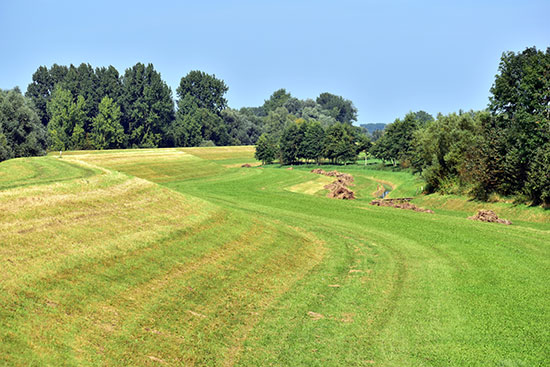

Sustainable Land Management (SLM) offers a wide range of benefits that contribute to the overall well-being of individuals, communities, and the environment. These benefits span economic, social, and environmental dimensions and contribute to long-term sustainability and resilience. Here are some of the key benefits that accrue from adopting SLM practices:

SLM practices improve soil health, water management, and nutrient cycling, leading to increased crop yields and livestock productivity. Healthy soils and efficient resource use contribute to sustained food production.
SLM provides opportunities for income generation, diversification, and value addition through practices like agroforestry, organic farming, and non-timber forest products. This enhances rural livelihoods and reduces dependence on single income sources.
SLM helps prevent soil erosion, desertification, and deforestation, preserving the long-term productivity and health of land and ecosystems. This ensures resources are available for future generations.
By conserving and restoring habitats, SLM supports biodiversity and ecosystem services. A diverse range of species enhances resilience, pollination, pest control, and genetic resources for crop improvement.
SLM practices enhance climate resilience by promoting drought and flood tolerance, carbon sequestration, and reduced greenhouse gas emissions. They contribute to the fight against climate change.
SLM helps maintain water quality and availability by reducing pollution, soil erosion, and over-extraction. Improved water management supports agricultural production, drinking water, and ecosystems.
Practices like integrated pest management, efficient irrigation, and organic farming reduce the need for costly inputs such as pesticides and synthetic fertilizers, leading to lower production expenses.
SLM practices reduce the use of harmful agrochemicals, promoting safer working conditions for farmers and minimizing risks to human health and the environment.
SLM encourages the integration of multiple land-based activities (e.g., agriculture, agroforestry, ecotourism), reducing economic risks associated with a single income source.
SLM involves local communities in decision-making, planning, and implementation, empowering them to manage their natural resources and improve overall well-being.
SLM often incorporates traditional and indigenous knowledge, supporting cultural practices and fostering a sense of identity and pride among local communities.
SLM can guide urban planning, promoting green spaces, efficient land use, and sustainable development in urban areas.
Adopting SLM practices can lead to compliance with sustainability standards and certifications, facilitating market access and premium prices for products.
SLM contributes to landscapes that are more resilient to natural disasters, such as floods, droughts, and landslides, reducing their impact on communities and infrastructure.
By maintaining healthy ecosystems, SLM provides essential services like water purification, carbon sequestration, and wildlife habitat, benefiting both humans and nature.
The benefits of SLM are interconnected and contribute to a more sustainable and equitable future. By promoting responsible land management, SLM supports the needs of current and future generations while safeguarding the planet's resources and ecosystems.
